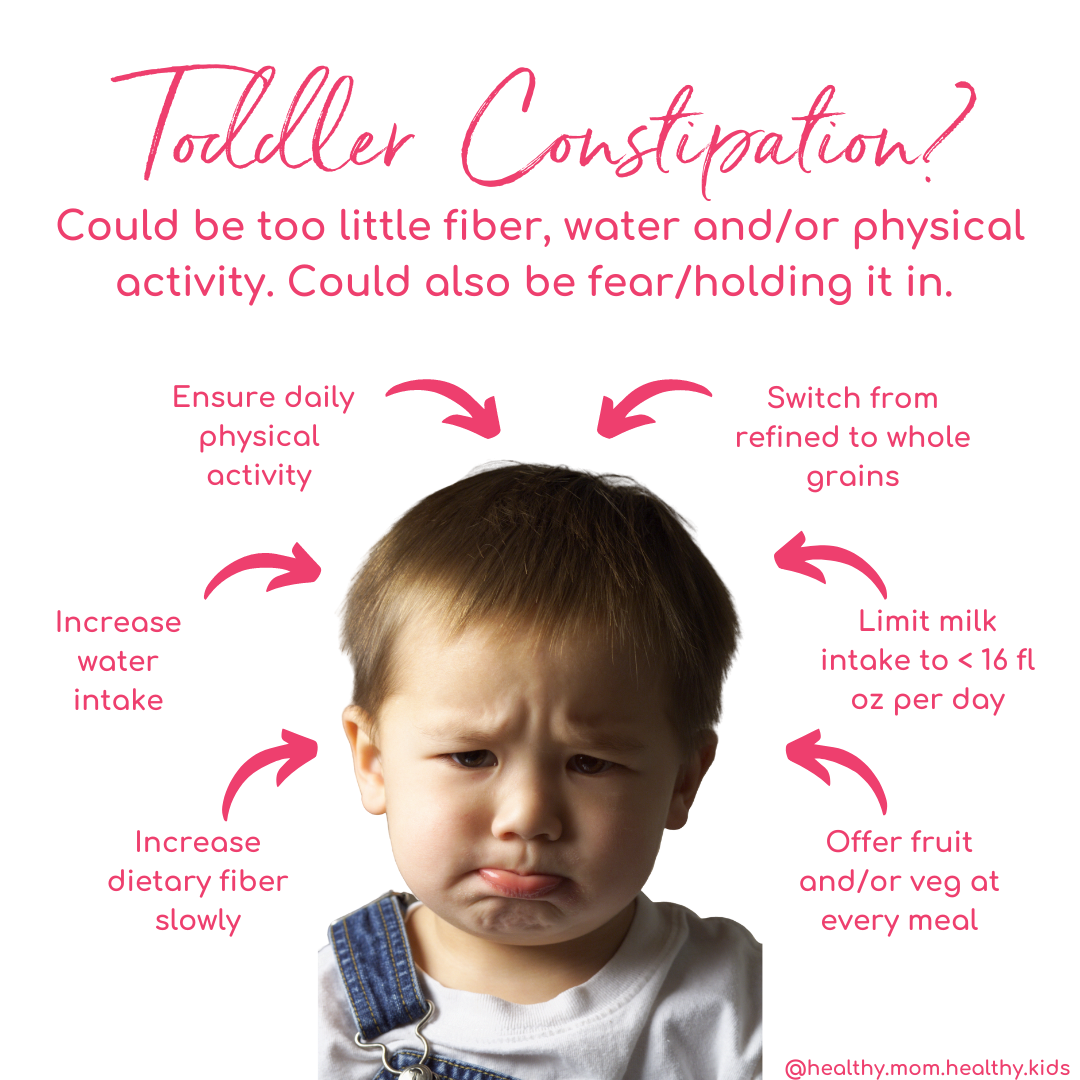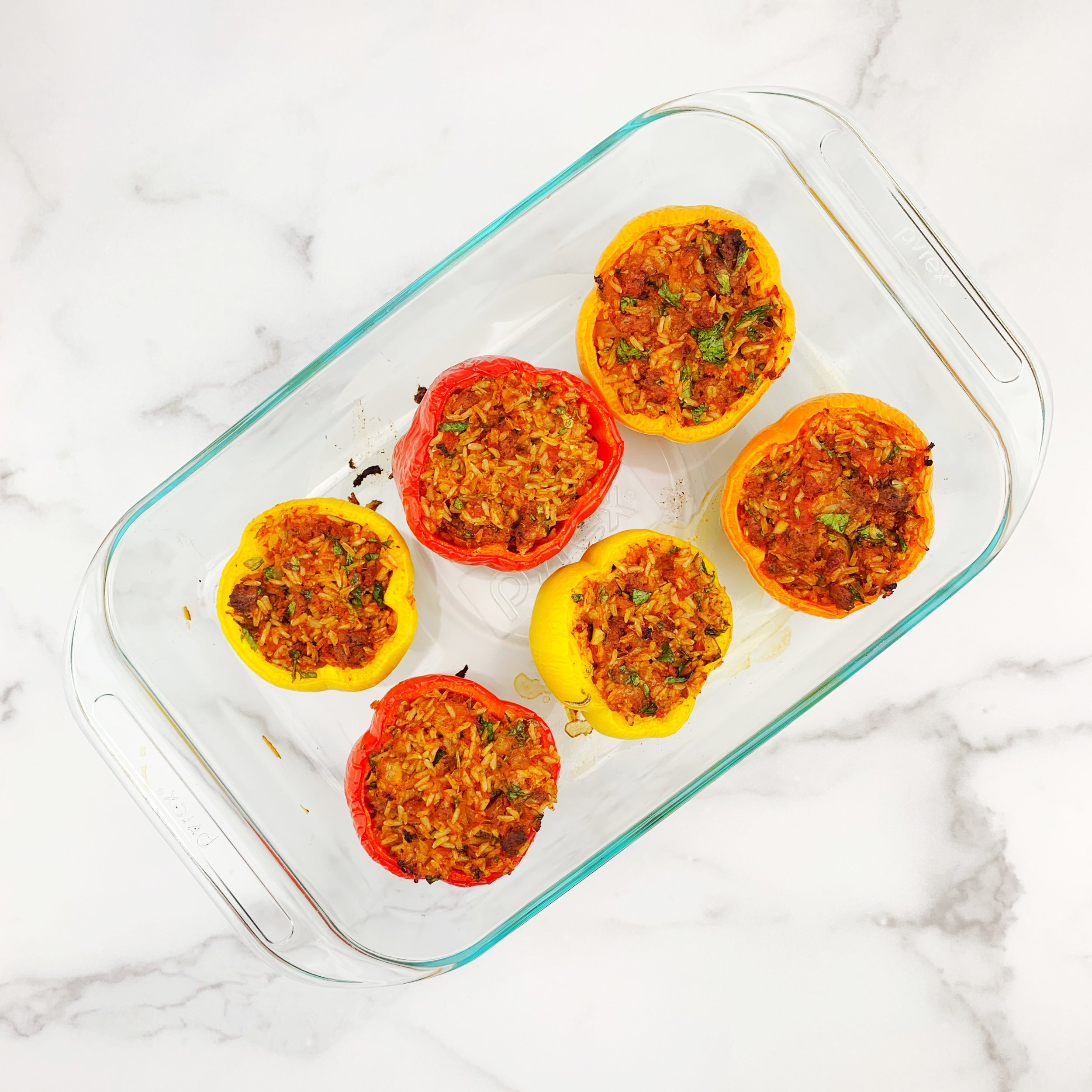Kids’ Constipation—Quick Relief and Natural Remedies
This blog contains affiliate links, meaning that if you choose to purchase a product through a link, I will receive a small commission - this in no way impacts the amount you pay. Affiliate links are marked with an asterisk (*).
Let’s talk poop! A common topic of conversation during those early years of parenting and sometimes beyond. Constipation significantly affects daily life and can become a source of frustration and worry for both the child and parent, so it’s helpful to learn how to head it off before it becomes a problem.
If you’ve been struggling (no pun intended) with helping your little ones move through periods of constipation, take comfort in the knowledge that functional constipation is common and affects somewhere between 1 to 30% of children worldwide. The good news is there are some quick and easy fixes to help relieve and prevent that unpleasant feeling for kiddos and make potty time less stressful!
As a mother of three and a registered pediatric dietitian, I’ve been there—I know it can be stressful. In this post, we’ll cover kids’ constipation and get into some quick remedies for prevention, management, and relief.
A 7-month old girl eating high-fiber vegetables. Thank you to her wonderful parents for allowing permission to share.
What is constipation and how does it affect kids?
The most common type of constipation in childhood is called functional constipation. It is defined as having hard, infrequent stools that are frequently difficult or painful to pass with no identifiable cause.
Constipation (in children under the age of 4) includes:
Passing stools 2 or fewer times per week
OR at least two of the following symptoms for a month or longer:
At least 1 episode of incontinence per week
Excessive stool retention
Painful or hard bowel movements
Large, bulky stools
The presence of a large fecal mass in the rectum
Constipation frequently happens in children when there are changes in diet or routine, during toilet training, or after an illness. The prolonged withholding of stool can also cause pooping to become painful and can cause even more withholding leading to more abdominal pain - a challenging cycle for both kiddos and parents!
Quick Relief and Remedies for Kids’ Constipation:
A warm bath can help relax the abdominal muscles and promote bowel movements
Fruits and Fruit Juices
Foods naturally high in sorbitol, including peaches, pears, prunes, avocados, raisins, and cherries, ferment in the intestines and draw moisture from the body into the stool, creating a natural laxative effect
Prune juice or apple juice can also help soften stool and ease constipation; given the sugar content in juices, consider offering them as needed and only in moderation
Drink a warm beverage or eat a bowl of warm whole-grain cereal in the morning to help stimulate a bowel movement; most children feel the urge to poop within 30-60 minutes after eating
Improve position on the potty for toilet-trained kiddos by using a stool, as many kids may dangle or cross their legs, which can make it hard for their pelvic floor muscles to relax
Consider adding foods rich in probiotics or a probiotic supplement* to help increase the beneficial bacteria in the gut and increase the frequency of stools
When your child is constipated and dietary and/or lifestyle changes are not providing sufficient relief, you may consider over-the-counter stool softeners or laxatives designed to treat constipation in children in the short term
The most commonly used non-stimulant laxative is called Polyethylene glycol 3350 (also known as Miralax)
Others that can also be helpful and are safe for use in children include magnesium hydroxide and senna
If you think your child may have a large, impacted stool, it can be helpful to use a glycerin suppository or enema to help soften the stool before it passes
* Always consult your pediatrician first before giving your child any medications!
How to Prevent Constipation in Kids
It’s always easier to prevent constipation in kids rather than manage it once it has become an issue. Take note of the tips below so you can stay on top of it before it becomes an issue for your little one:
Include Plenty of Fiber in Your Child’s Diet
Fiber plays an important role in regulating the digestive system, keeping our bowels moving, and relieving constipation. Fiber is the part of a carbohydrate that cannot be broken down by the body.
There are two types of fiber - soluble and insoluble. Soluble fiber is found in foods like beans, fruit, and oats and creates larger, softer stools by helping them retain more water. Insoluble fiber increases the bulk of the stool and speeds up the motility of the digestive tract so that stools move more easily through the intestines.
Good sources of fiber include whole grain products, beans, legumes, nuts, seeds, fruits, and vegetables.
TOP TIP - To estimate the minimum number of grams of fiber your child should ideally be getting each day, take the age of your child and add 5. So, if your child is 3 years old, they should be eating at least 8 grams of fiber per day.
Increasing the fiber in your kiddo's diet is easier when you regularly offer whole-grain cereals, high-fiber fruits, brown rice, beans and legumes, nuts, seeds, and lots of veggies.
When looking for a high-fiber product at the grocery store, read nutrition labels and choose products that contain at least 3 grams of fiber per serving.
But be sure when introducing more fiber into your child’s diet that you go slowly. A rapid increase in fiber can cause gas, cramping, bloating, and worsen constipation.
High-fiber meals including vegetables, legumes, fruit, nuts, and oats can help optimize the digestion and prevent constipation.
2. Increase your child’s water intake
Next up, water! Drinking plenty of water goes hand in hand with fiber intake - this holds true for everyone, no matter their age. In other words, the more fiber in the diet, the more water is needed to help make stools soft and easier to pass.
Here are some general water intake guidelines for children, per the American Academy of Pediatrics:
For kids ages 1-3, aim for 5.5 - 6 cups of fluid per day
For kids ages 4-8, aim for 7 - 7.5 cups of fluid per day
TOP TIP - Make hydration more fun and interesting by adding cut-up fruits and veggies to your child’s water bottle* to help enhance the flavor (my favorites are lemon and lime).
We also absorb water from foods like fruits, vegetables, soups, and popsicles. To help your child stay hydrated, try offering more high water-content fruits and veggies like watermelon, oranges, and cucumber. You can also try this tasty and hydrating green smoothie packed with fruits, vegetables, and coconut water.
For some older children, it may help to keep a water tracker chart on the fridge and have your kids check off each cup of water they drink.
3. Be sure to provide plenty of time for physical activity and exercise
Physical activity is another important lifestyle behavior that has a number of benefits, including the role it plays in digestive health. Bike rides, walks, trips to the playground, dance parties in the living room, sports - whatever keeps your child moving all count toward the 60 minutes of daily exercise that are recommended for kids. Make this a family affair, and everyone will benefit!
4. Maintain good bowel habits and a regular bathroom schedule
Sometimes, fear of the potty can cause a child to hold their poop in, which can lead to and/or exacerbate constipation. To prevent this, encourage regular trips to the potty after meal times.
Try to make sure the bathroom is a safe and enjoyable place for your child by keeping books in a basket and providing a stool for easy transitions on and off the toilet.
If you prefer to use a reward for toilet trips, opt for non-food-related reward systems for going to the potty. Depending on the child, sticker charts often work well as a way to track and reward bowel movements.
5. Provide extra support during transitions
It is common for constipation to reappear during periods of change or shifts in schedules, like when school starts up in the fall or there is a change in caregivers. These changes can be especially hard if it means getting used to using a new bathroom.
Try to pay attention to bowel movements (or a lack of bowel movements) and engage your child in conversation about any problems they might be experiencing so you can nip constipation in the bud before it becomes a larger issue.
6. Limit milk and dairy products
Dairy products and cow’s milk are excellent sources of calcium and vitamin D. They also provide beneficial fats and protein for your growing little one.
However, sometimes drinking too much milk (more than 16 oz per day), in addition to eating more than the recommended 2-3 servings of dairy, contributes to constipation. If your child is prone to constipation, be sure to keep an eye on their daily servings of dairy.
My Favorite High-Fiber, Kid-Friendly Recipes:
Toasted Chickpeas - ½ cup of chickpeas packs 6g of fiber, compared to Lay’s Potato Chips, which offer less than 1g of fiber per serving. Substitute these for an afternoon snack your kids will love!
Stuffed Peppers - An easy weeknight dinner that packs protein from a little bit of ground beef and lots of fiber from brown rice and veggies.
Mediterranean Summer Pasta - This tasty dish calls for chickpea pasta, which is a great high-fiber option, but feel free to substitute whole wheat pasta or another bean-based pasta alternative.
Whole Grain Banana Bread - Who doesn’t LOVE banana bread? This one is subtly sweet and made with high-fiber flour.
Super Bowl Chili - Chili is one of my favorite meals because you can batch cook and make multiple portions that freeze well! You can also easily customize chili to your taste by adding different veggies and beans.
Granola - store-bought granola is often low in fiber and high in added sugar. Make your own and add some yogurt and berries for a healthy breakfast. Kids love to help make this recipe, too.
Naturally High-Fiber Foods:
Navy Beans
Carrots
Blackberries
Pear
Kiwi
Grapefruit
Pistachios
When should I worry about constipation?
Sometimes, these types of lifestyle modifications aren’t enough to completely relieve the symptoms of constipation. If your child is dealing with persistently painful or infrequent poops, chronic stomach aches, blood in their poop, or diarrhea/encopresis episodes, it’s important to notify your trusted healthcare provider.
In order to help alleviate constipation problems long term, certain medications may be needed, and it is important to work closely with your pediatrician to help manage symptoms.
If you are looking for more tips for constipation, specifically in infants, check out this blog post on 5 Simple Baby Constipation Remedies.
If you are concerned about your child’s eating habits and want to learn how to establish a healthy family feeding dynamic from the ground up, check out my FREE guide to reducing picky eating or enroll in my pediatrician-endorsed online course, Solve Picky Eating, which includes 12 self-paced short video lessons, downloadable guides, and checklists to support you along your journey of growing healthy, intuitive, and adventurous eaters. And if you're looking for personalized nutrition support, I am also available for a virtual one-on-one consultation.







